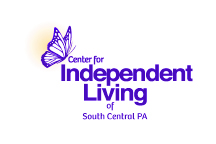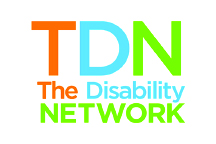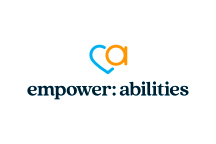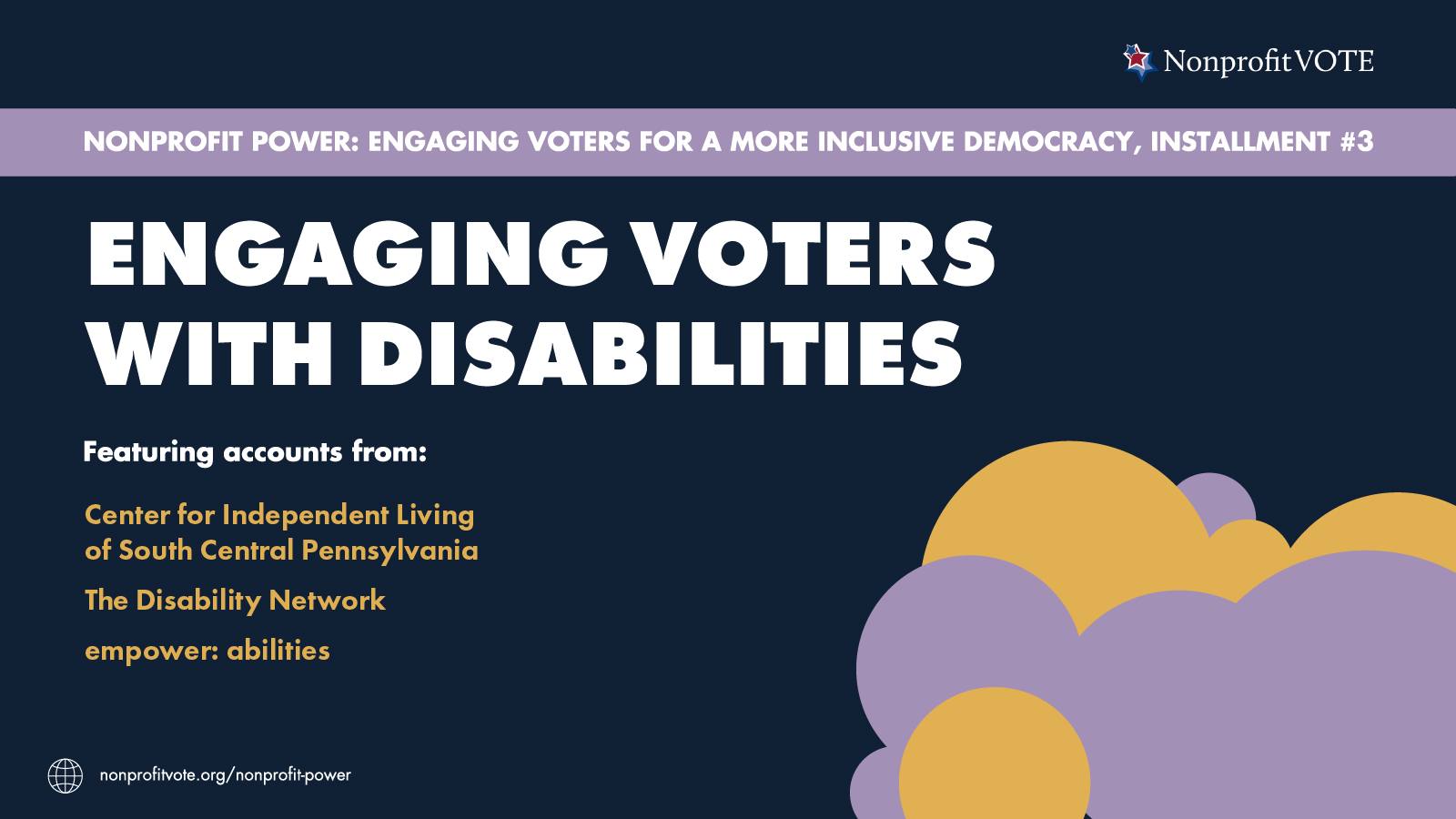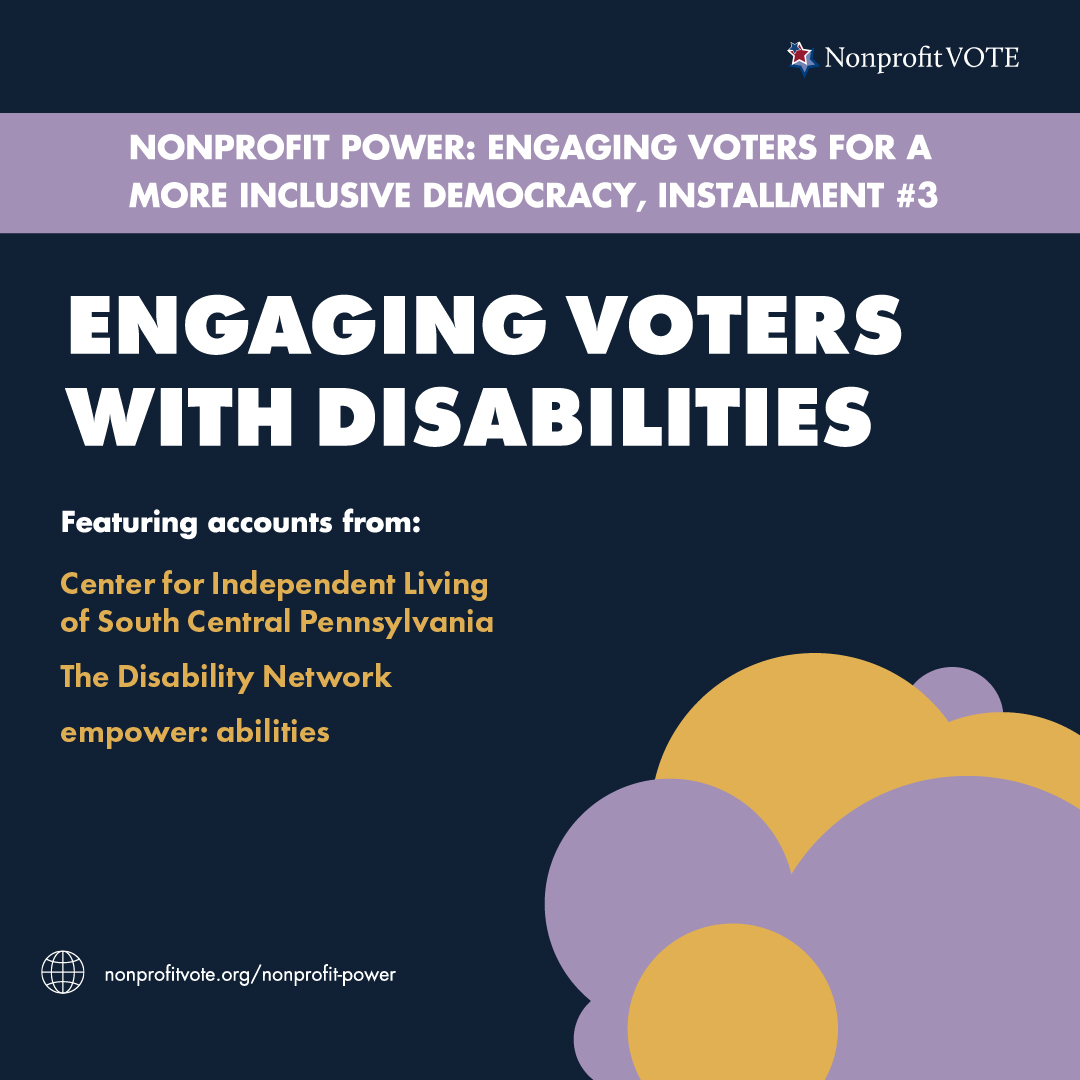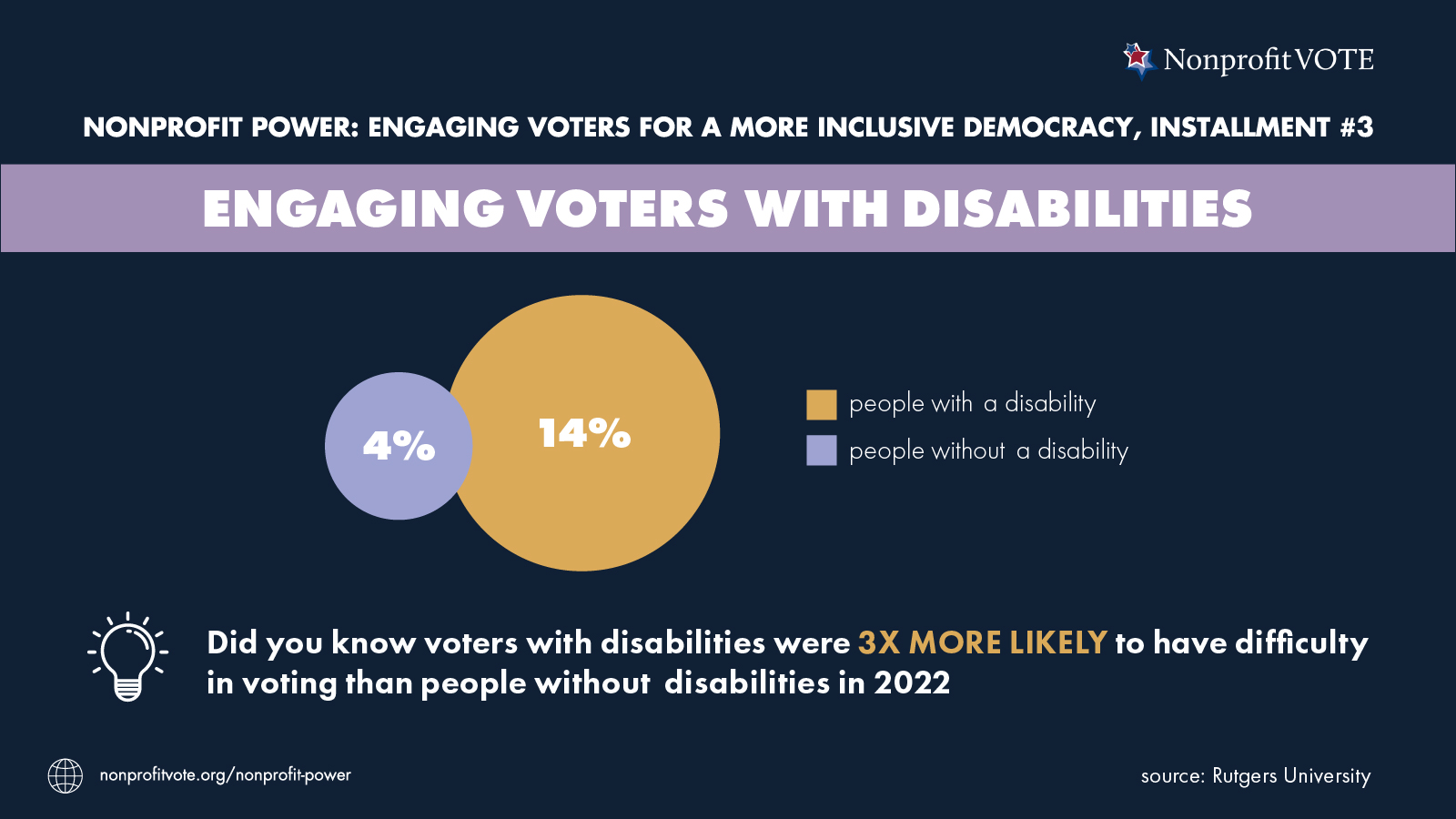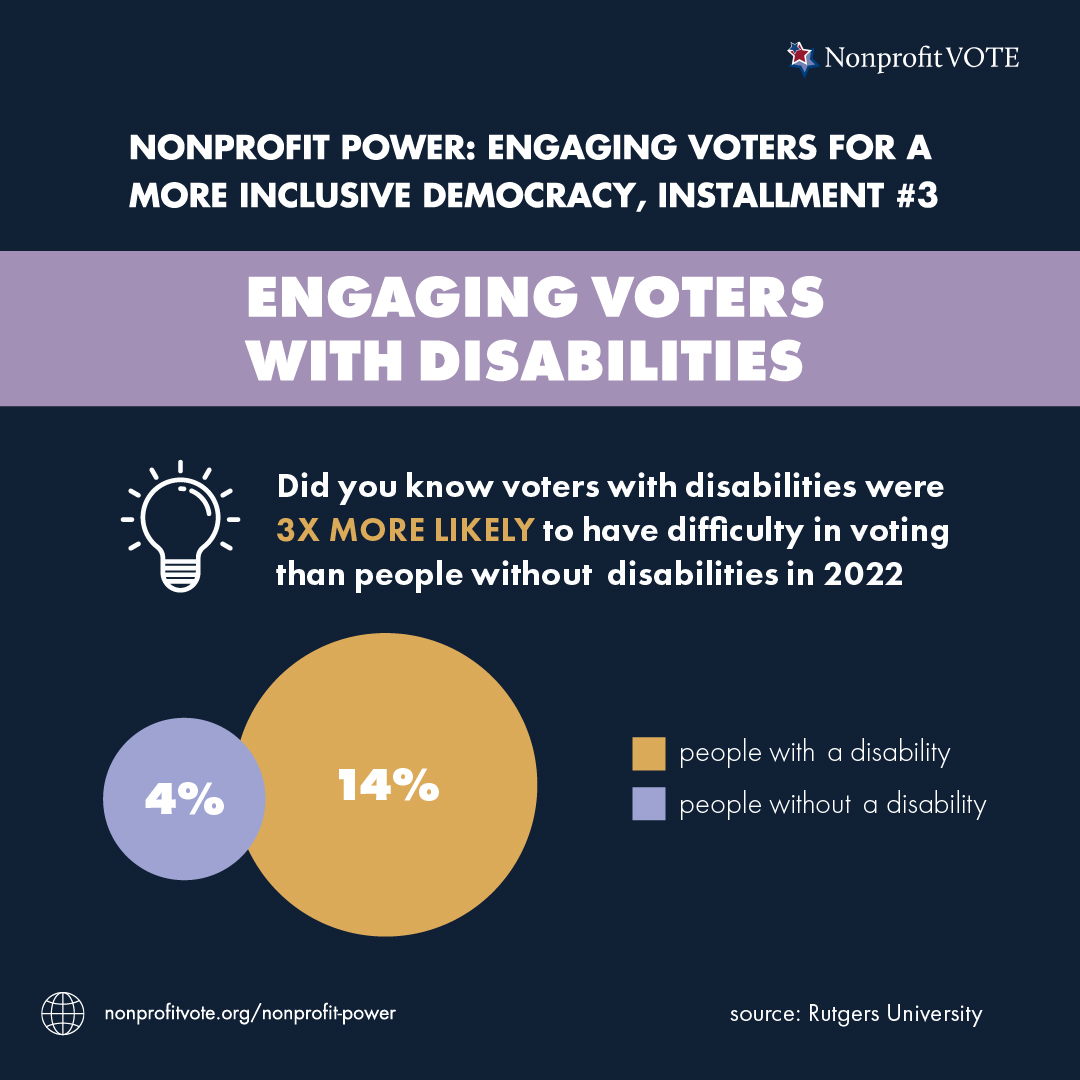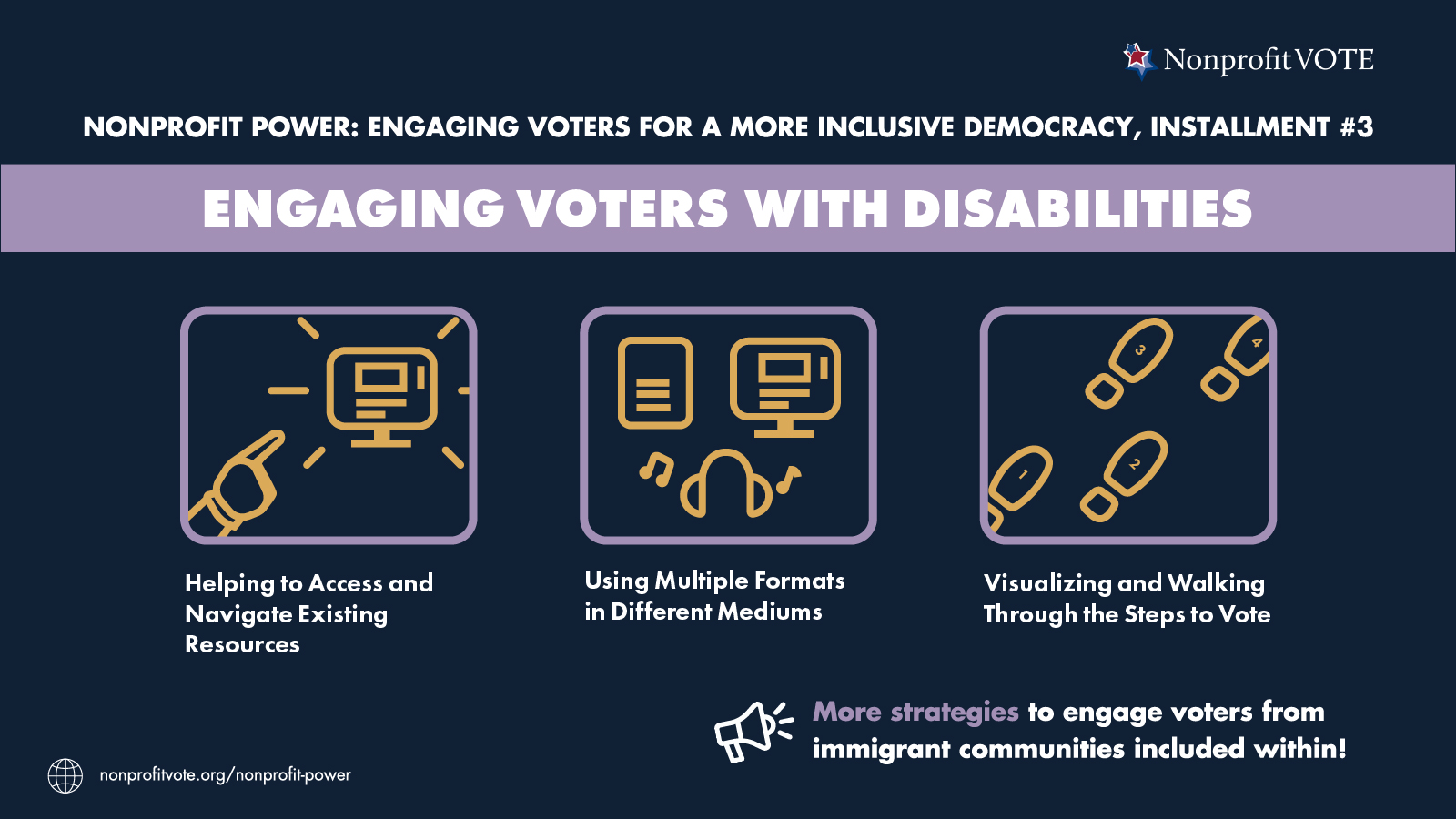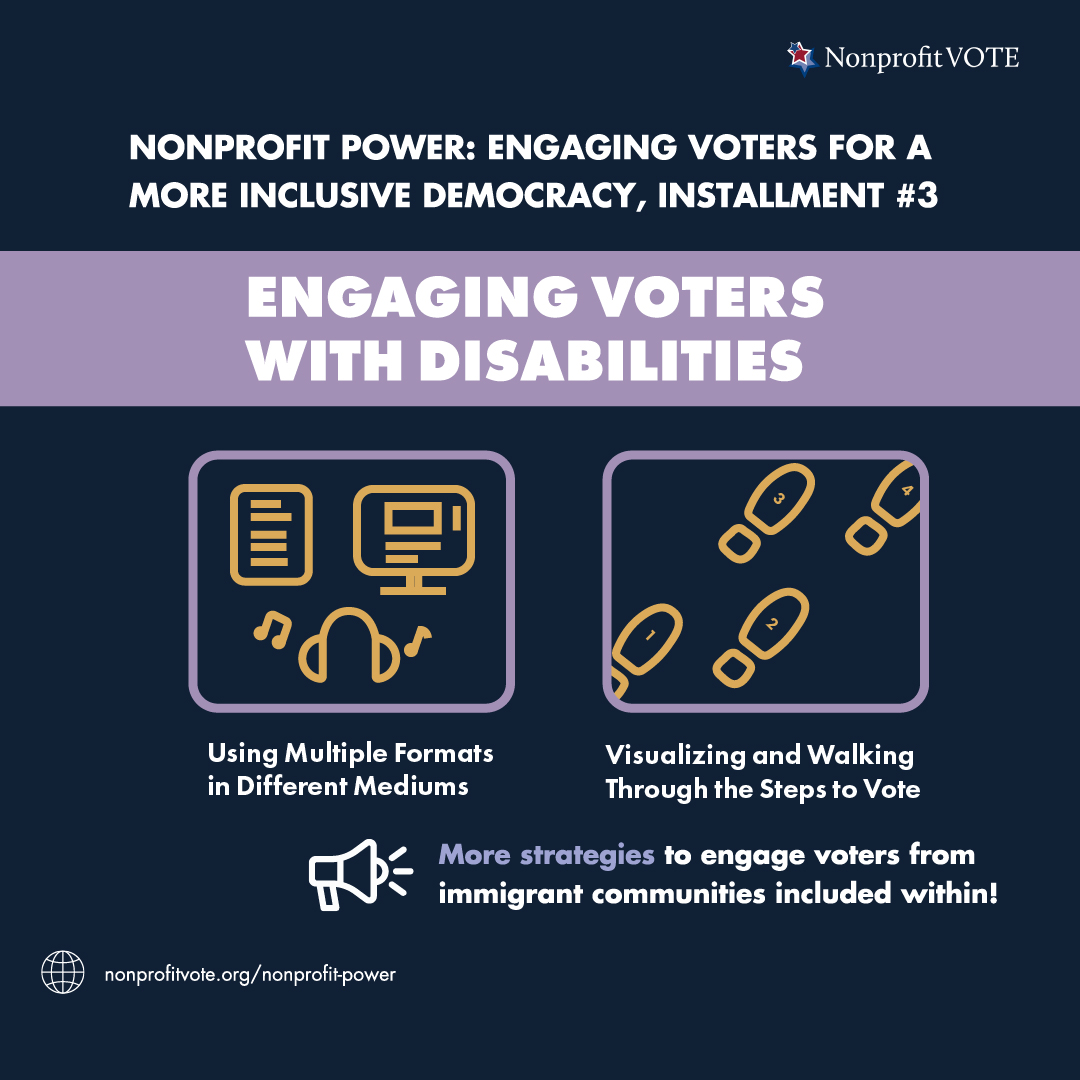We spoke with three organizations that serve people with disabilities: the Center for Independent Living¹ of South Central Pennsylvania; The Disability Network; and empower: abilities. The insights and suggestions in this report may not apply to every community, nor will they address all of the differences that exist for various disability communities. However, for organizations looking to engage voters with disabilities, these strategies can serve as a starting point.
Using Multiple Formats in Different Mediums
Improvements made as a result of laws like the Americans with Disabilities Act provided benefits for all people. Curb cuts designed to accommodate people in wheelchairs also benefited people pushing strollers, for instance. Building on this idea, “universal design” is the gold standard. This means designing spaces, products, and communications to include all people.
For nonprofits, this means ensuring the physical and digital space in which voter registration is done is accessible to all. This may mean multiple formats in various visual, auditory, and tactile mediums. For visual information and forms, you may want to provide both paper printouts and digital devices so screen readers can be utilized. Hosting a webinar on voting information? Be sure to turn on captioning. Posting an image to social media? Be sure to use the “alt tag” features. Free online tools also exist to help simplify language or check for color contrast to ensure readability.
For tactile engagement, provide writing implements as well as tablets for those with limited mobility or difficulty with legible handwriting. QR codes can also be an interactive way to engage people,but always include the link in case a device can’t scan the QR code. There are also checklists for ensuring your space is accessible.
Take advantage of the many free tools and resources developed and fine-tuned over the years. And there are organizations in every state that can serve as a further resource and guide.
The goal is to ensure information can be accessed and understood by any person, regardless of one’s particular physical or intellectual ability. This communicates in a physical way that everyone’s voice and experience are valued—that all are seen, heard, and valued.
_______________________________
¹ Centers for independent living (CILs) were created as part of the Rehabilitation Act of 1973 in order to:
promote a philosophy of independent living including a philosophy of consumer control, peer support, self-help, self-determination, equal access, and individual and system advocacy, in order to maximize the leadership, empowerment, independence, and productivity of individuals with disabilities, and the integration and full inclusion of individuals with disabilities into the mainstream of American society.
The philosophy of Independent Living is based on the belief that People with Disabilities should be able to live with dignity, make their own choices, and participate fully in society. The right to vote, and to do so independently, is a key component of CILs’ work to support self-determination for People with Disabilities.
_______________________________

“Accessible and easily understandable voter information is crucial for individuals with disabilities to fully engage in the voting process. Complex or overwhelming resources can create unnecessary barriers. We break down information into smaller, manageable pieces and try to provide accessible ways of sharing information.”
—Shelby Butler, empower: abilities
 “Universal Design really looks at how this works for everyone. It could be in the design of materials. It could be in spaces. It could be in systems.…It isn’t the requirement, but if we can start with universal design, we’re already building a system for everyone and we’re probably gonna land in a really good spot that serves everyone well.”
“Universal Design really looks at how this works for everyone. It could be in the design of materials. It could be in spaces. It could be in systems.…It isn’t the requirement, but if we can start with universal design, we’re already building a system for everyone and we’re probably gonna land in a really good spot that serves everyone well.”
—Katie Curnow, The Disability Network
Visualizing and Walking Through the Steps to Vote
Voting can be a uniquely challenging process for anyone. As trusted organizations, nonprofits can provide welcoming spaces where voters feel comfortable reaching out for help.
One way to work with people with disabilities is in preparing to vote, from making sure voter information is clear and understandable to addressing potential concerns: How will the voter get to the polling place? If driving, will there be accessible parking? Will the pathways to the entrance be accessible and clearly marked? How will the doors open?
For first-time voters or if a polling place has changed, visiting the site together in advance can help to get a feel for the location and identify any areas of concern. Addressing physical barriers in order to make people feel more confident on Election Day is great.
Any issues can be shared with the local county election office, which can be an ally in making sure accessibility requirements for polling places are met. Frame it as, “We want to help make sure everyone can vote.”
Beyond the physical location, working through a sample ballot can be helpful. For many, anything familiar or comforting can be helpful. Try reaching out to the local election office to do a demonstration to give voters experience with the actual voting machine that will be used.
By better understanding the full range of possible disabilities and appropriate accommodations, nonprofit staff can help address some of the barriers to voter registration and education, while maintaining dignity and independence for people with disabilities.
“Sometimes we don’t know what we don’t know. Just being aware and curious and willing to move through our biases or perceptions and see what we can learn more about goes a long way. One big thing we’re working on is just perception of disability overall.
When in doubt, check with the person with a disability. They are the expert on their experience and their body. A lot of times we wanna make assumptions or have something that’s really broad and big, but really think about the individual in front of you in these cases. We don’t have to be experts on everyone’s lived experience, but just being open to it is good.”
—Katie Curnow, The Disability Network
Helping to Access and Navigate Existing Resources
Another way nonprofits can help address voting barriers faced by people with disabilities is by connecting people to local resources and information. Presenting clear and understandable information like key dates, voting locations, transportation options, etc. is essential. Providing reminders of key dates can further make voting more accessible.
Nonprofits can also help lift up the experience of people with disabilities is by engaging elected officials. Working with people to navigate how to request accommodations and how to voice concern about public spaces or resources that are not accessible can be very empowering.
“We want to raise awareness among individuals with disabilities about the connection between public programs they rely on and the decisions made by public officials. Creating opportunities to meet elected officials in comfortable spaces like our office or in a person’s home is a great way to bridge that gap. We also work to stay connected through coalitions where we partner with other local and statewide groups. By working collectively, we can advocate for policies that ensure accessibility and inclusivity in the voting process.”
—Shelby Butler, empower: abilities
“We provide voter information cards, messaging, and training with key information like transportation, dates, and voting rights. And because we have longstanding relationships and are seen as a trustworthy source, we were able to work with the Secretary of State’s office to help address misinformation about voting dates spread in our area.”
—Katie Curnow, The Disability Network


 “Universal Design really looks at how this works for everyone. It could be in the design of materials. It could be in spaces. It could be in systems.…It isn’t the requirement, but if we can start with universal design, we’re already building a system for everyone and we’re probably gonna land in a really good spot that serves everyone well.”
“Universal Design really looks at how this works for everyone. It could be in the design of materials. It could be in spaces. It could be in systems.…It isn’t the requirement, but if we can start with universal design, we’re already building a system for everyone and we’re probably gonna land in a really good spot that serves everyone well.”